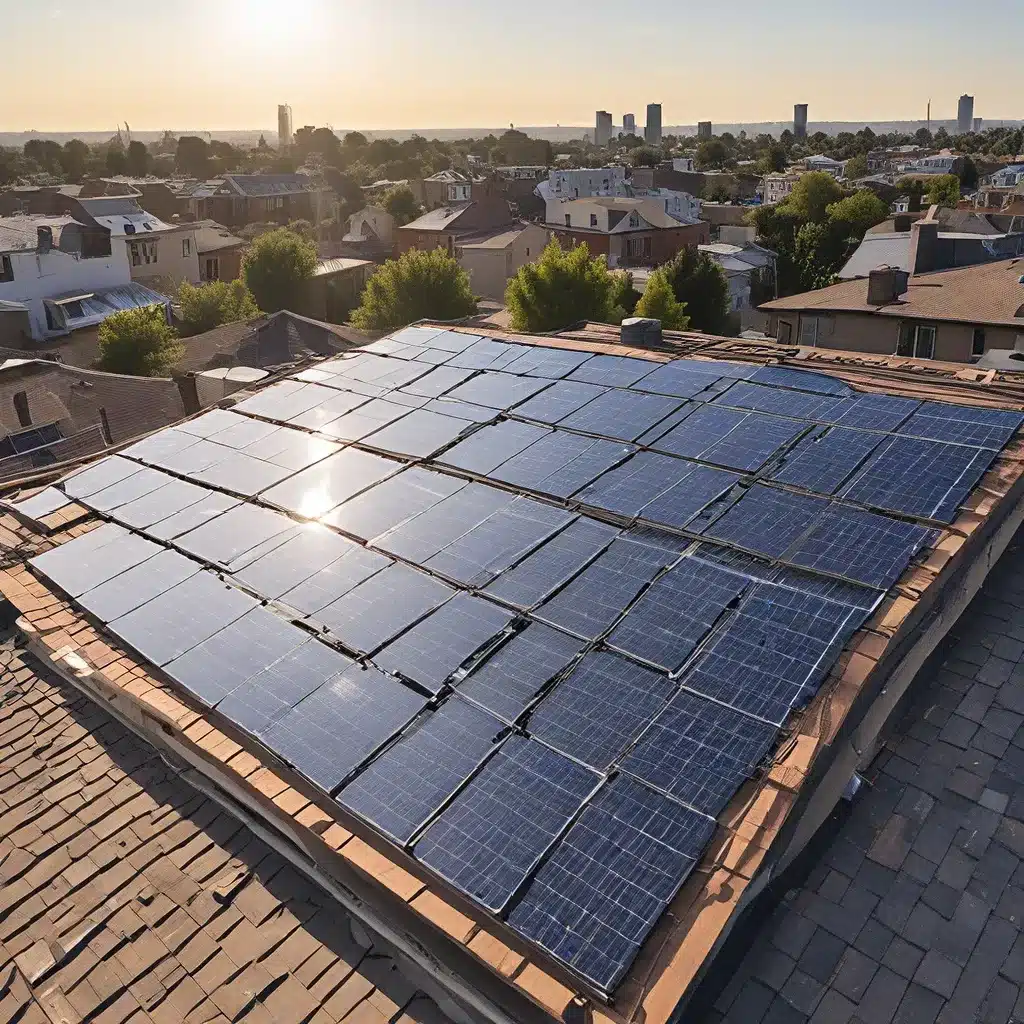
Embracing the Power of the Sun: My Journey to Solar-Powered Living
Sit back, relax, and let me share with you the story of my unexpected dive into the world of solar power. When I first thought about getting a 19-foot Airstream and living in it for a while, I had no idea what to expect. I’ve lived in small homes my whole life and done plenty of extended trips sleeping in my Jeep and truck, but I’d never RVed before.
Little did I know that my Airstream journey would soon lead me down the path of solar-powered off-grid living. It all started at the end of August when I jumped right into this new adventure. To be honest, I’m still not completely sure what I was thinking, but I can say with certainty that I haven’t regretted a single moment of it.
Navigating the Solar Landscape: Lessons Learned
As I embarked on this solar-powered adventure, I quickly realized that the world of solar panels, batteries, and electricity is a complex one. My head started to spin as I dove into the research, trying to understand voltage, watts, amperage, and all the technical jargon. It was like going back to 12th-grade science class all over again!
One of the first and most important lessons I learned is that solar power does not power your RV; it charges your batteries. That’s right, the solar panels don’t directly power your RV’s electrical system – they simply recharge the batteries, which then provide the power. This was a crucial distinction that I had to wrap my head around.
Another important lesson was that solar power is only as good as your batteries. No matter how many solar panels you have, your power is limited by the capacity and performance of your batteries. This meant that I had to make sure my batteries were in top shape if I wanted to maximize the benefits of my solar setup.
Choosing the Right Solar Solution
With these lessons in mind, I set out to find the perfect solar setup for my Airstream. I quickly realized that the options were overwhelming. Airstream quoted me over $4,000 for a 200-watt solar kit with two AGM batteries, and nearly $3,000 for just the roof-mounted 200-watt panels. As much as I appreciated the convenience of a dealer-installed solution, I couldn’t justify that kind of investment, especially with a land purchase and home construction project in the works.
That’s when I stumbled upon the Zamp portable solar panel, a 180-watt marvel that cost me a much more reasonable $750. What drew me to this solution were its affordability, portability, and the fact that it was locally manufactured in Bend, Oregon, using mostly local materials. Plus, my Airstream was “Zamp Solar Ready,” which meant the plug-and-play setup was a breeze.
Unlocking the Secrets of Solar Power
As I delved deeper into the world of solar power, I learned some additional valuable lessons that I want to share with you:
-
Battery Depth of Discharge: It turns out that unless you have expensive lithium batteries, you can’t actually use 100% of your battery charge if you want them to last. With both wet and AGM batteries, discharging them more than 50% can severely compromise their lifespan.
-
Amp Hours and Power Usage: Figuring out how much solar power you need is a delicate balance between your battery capacity, your power consumption, and the potential amp hours generated by your solar panels. I found that the best way to figure this out was to take myself on a boondocking trip and see how long I could last on battery power alone.
-
Charging Efficiency: Even with thick wildfire smoke blanketing the area, my 180-watt Zamp panel was still able to generate 15-20 amp hours of power per day – about 50% of its normal output. This was a pleasant surprise and a testament to the panel’s efficiency and resilience.
Living the Solar-Powered Dream
Now, as I wrap up my 17 days of solar-powered living, I can honestly say that it has been an incredible experience. Life has been simple, relaxing, and downright amazing. I’ve been able to power all my essential needs – from running the refrigerator and ceiling fans to charging my electronics – without any hiccups.
Of course, there have been a few limitations. I don’t have the luxury of running my air conditioning or microwave on solar power, as those are real power hogs. And without an inverter, I’ve had to get creative with charging my laptop and other 110V devices. But with the help of portable power banks and a small inverter, I’ve been able to keep everything running smoothly.
Embracing the Simplicity of Solar Living
One of the biggest lessons I’ve learned during this solar-powered adventure is the importance of water and waste management. While I spent a significant amount of time researching power and solar, I quickly realized that water and waste are the true limiting factors when living off-grid. Carefully managing my fresh water usage and gray/black tank levels has been crucial to extending my time in this solar-powered paradise.
As I reflect on this experience, I’m filled with a newfound appreciation for the simple things in life. The ability to harness the power of the sun and live sustainably has been incredibly empowering. It’s made me more aware of my footprint and the importance of being mindful of our energy consumption.
So, if you’ve been considering dipping your toes into the world of solar-powered living, I encourage you to take the plunge. Start small, like I did with my Zamp portable panel, and see how it transforms your relationship with energy and the environment. Trust me, it’s a journey worth taking – one that will leave you with a newfound appreciation for the power of the sun and the beauty of living simply.